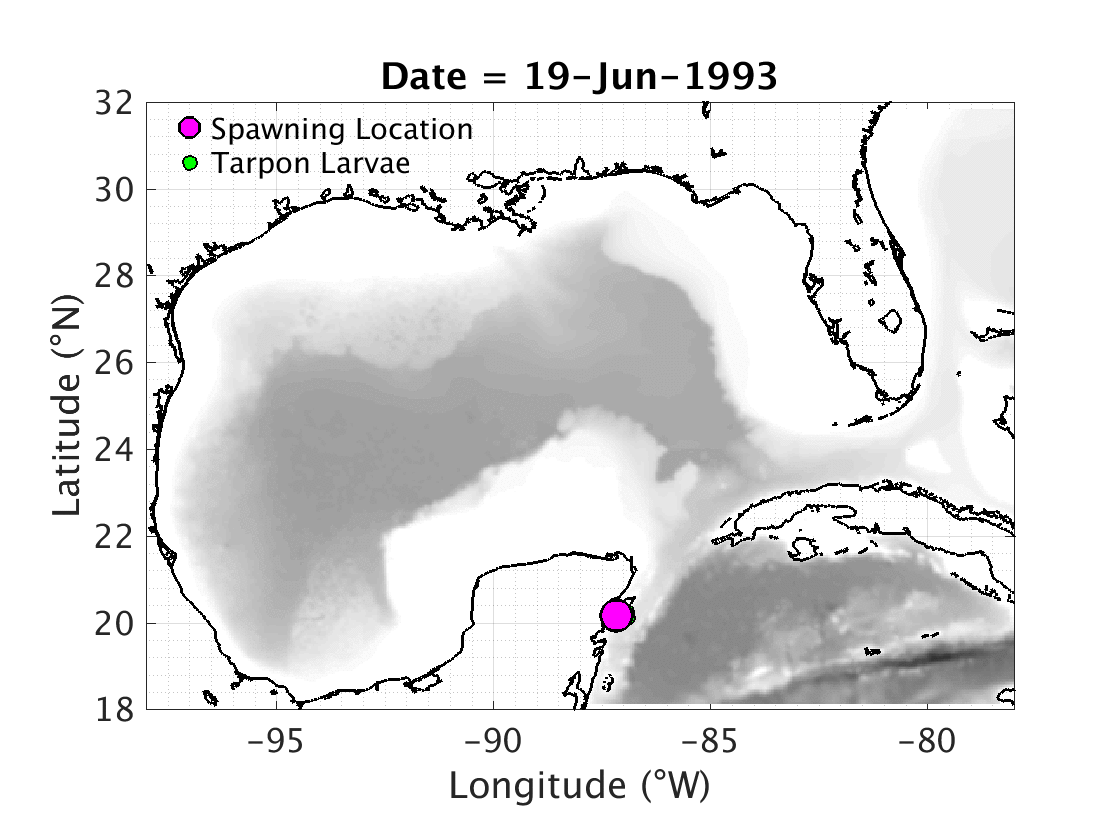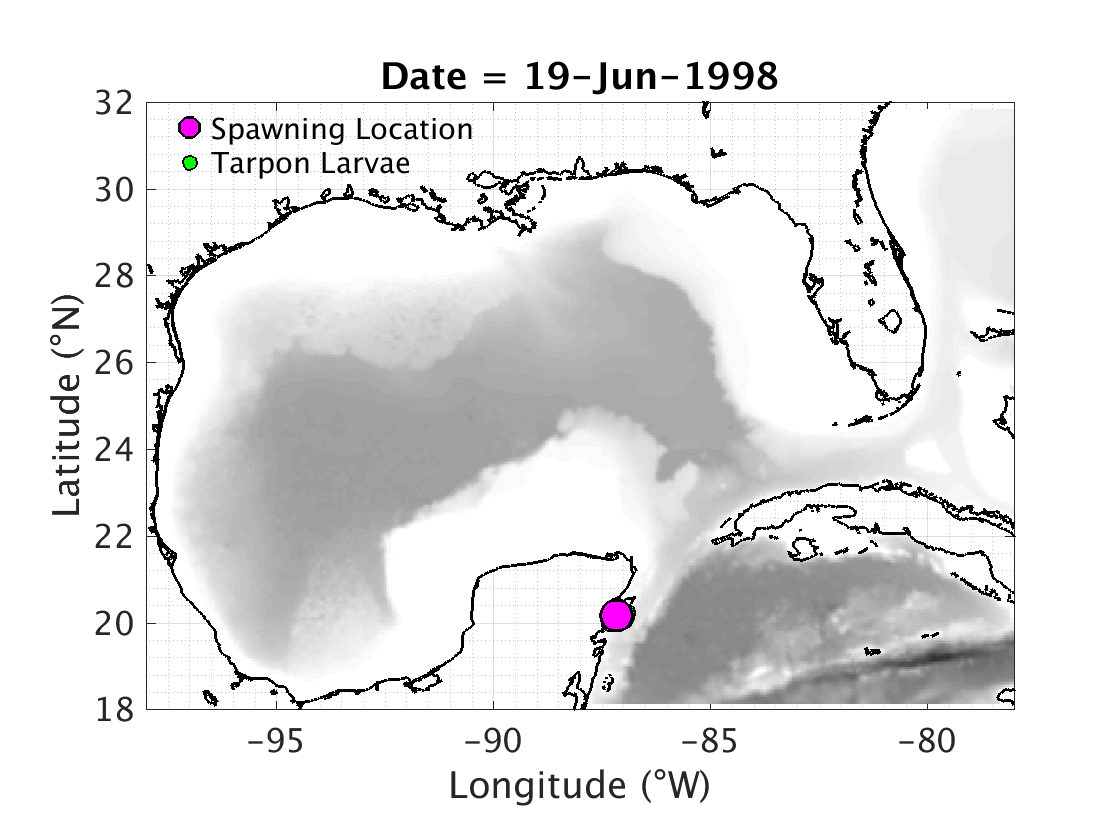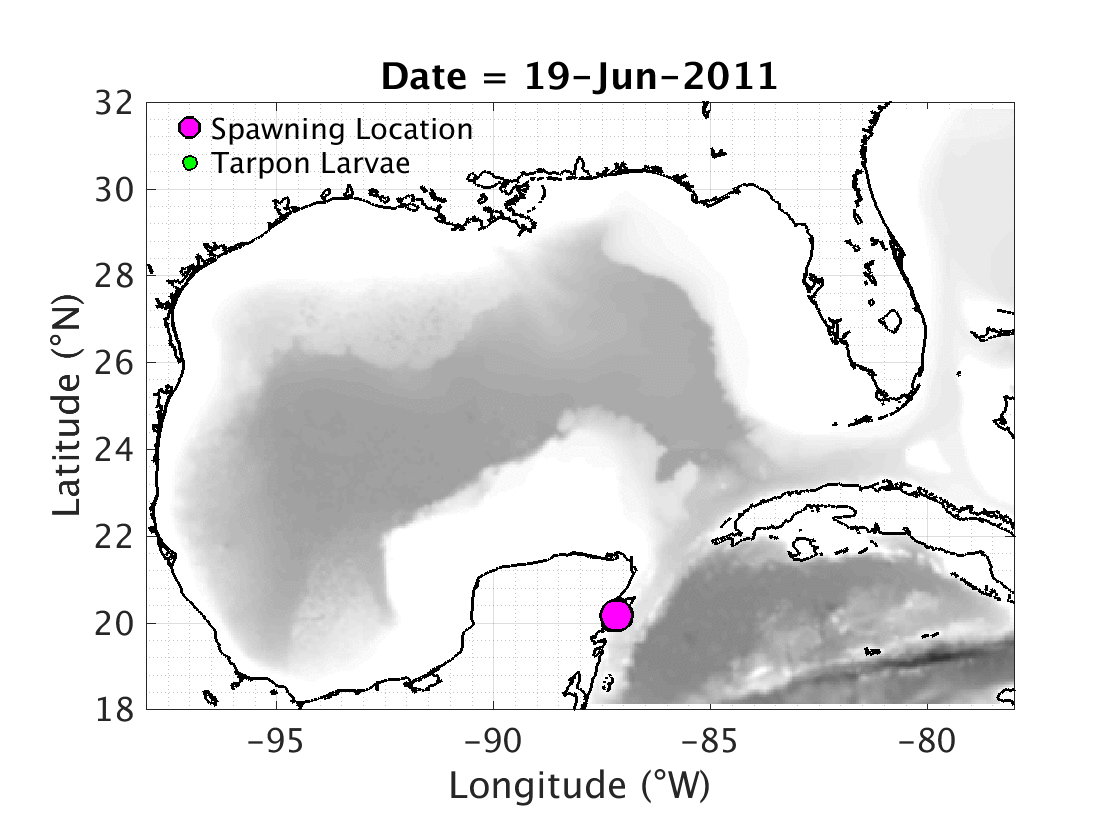Learn About Dispersal

Exploring how marine life navigates the connected currents of our oceans
In the ocean, many fish reproduce by releasing eggs into the water where they drift and are fertilized. Ocean computer models can predict where eggs, fish larvae, and other objects, such as marine plastics or oil spills, drift in the ocean. Below is a case study for a Tarpon spawning location near Cancun. While the ocean may seem like a vast body of water, you might be amazed at how connected seemingly distant points are.
Tarpon Dispersal Simulations

Tarpon 1993

Tarpon 1998

Tarpon 2011
Ocean currents are also highly variable which means some years are better than others for increasing populations of fish. If you like to catch tarpon in the Florida Keys, you should think about conserving marine areas as far away as the eastern Yucatan Peninsula. Distant populations can contribute to the Florida Keys just as much as nearby West Florida Shelf populations.



